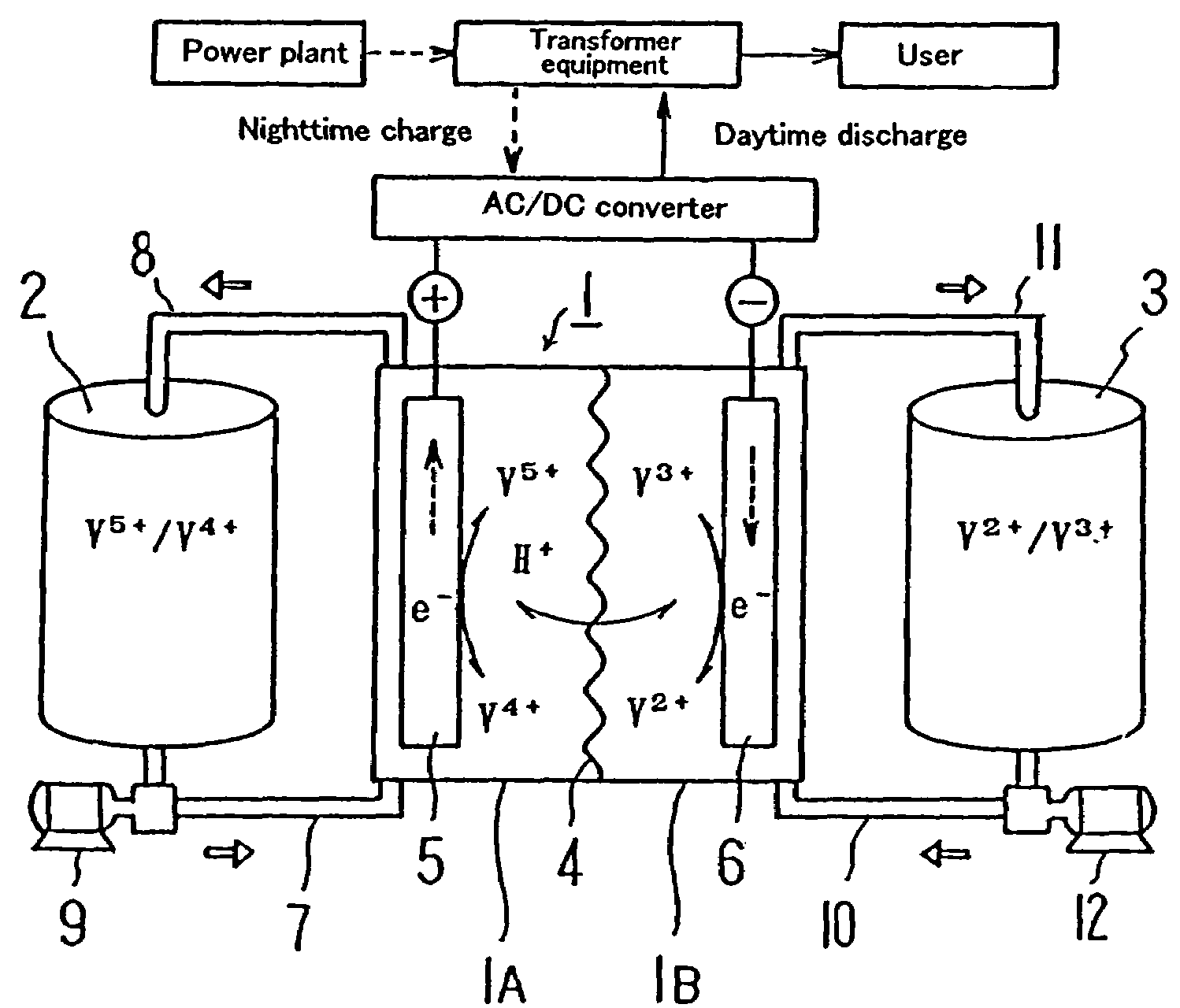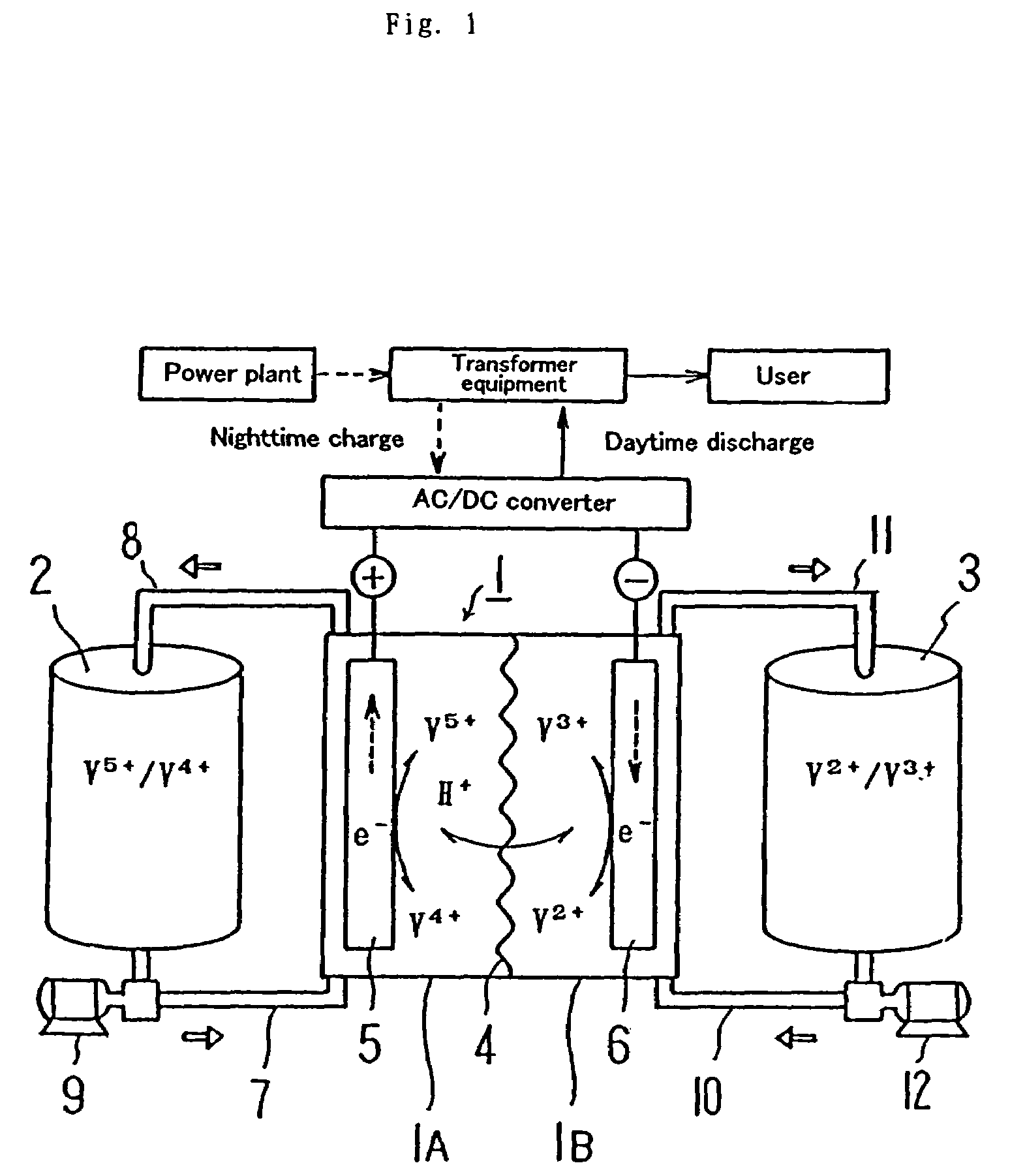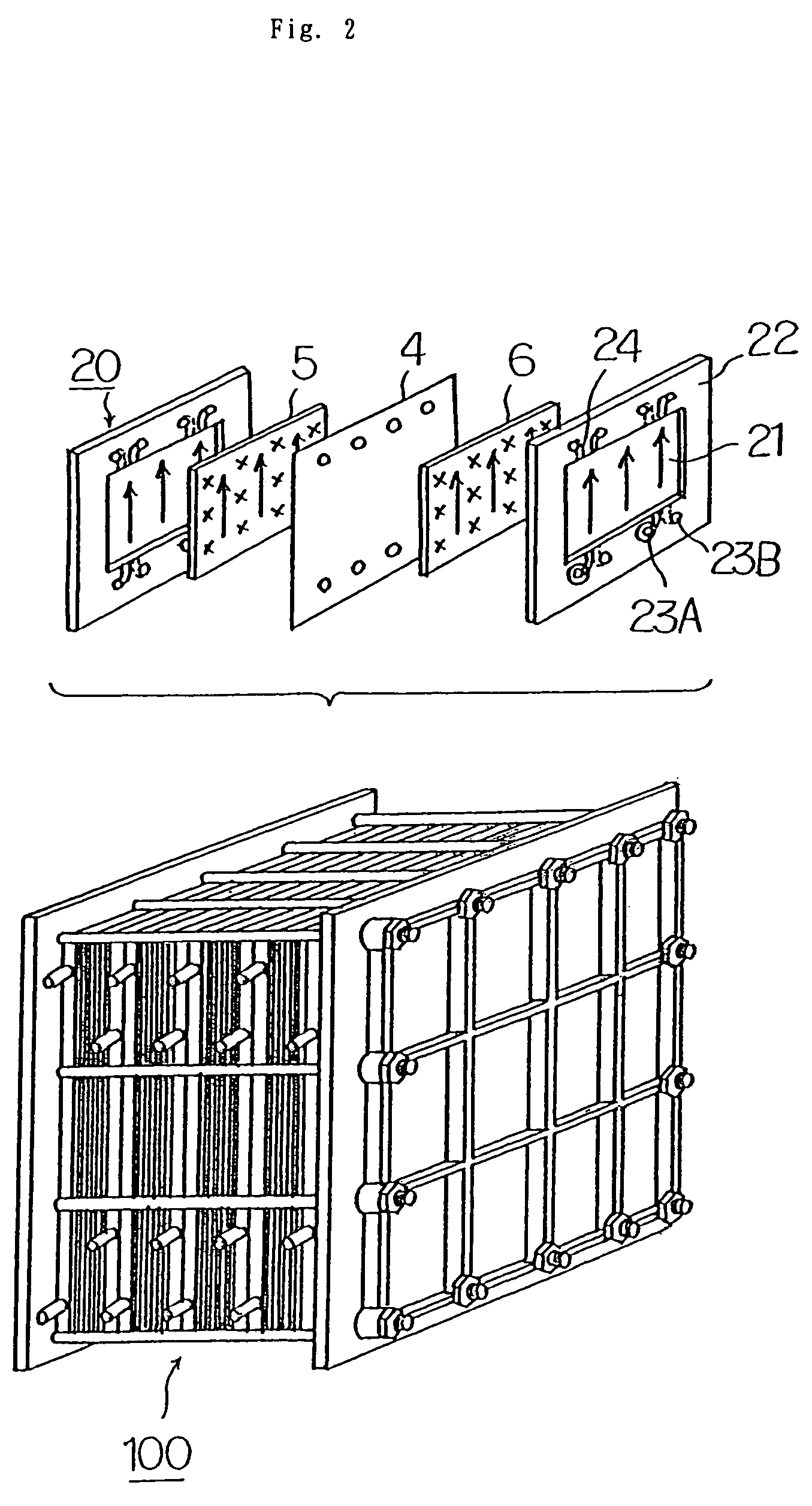Electrolyte for redox flow battery, and redox flow battery
a technology of redox flow battery and electrolyte, which is applied in the direction of secondary cell details, sustainable manufacturing/processing, indirect fuel cells, etc., can solve the problems of clogging carbon electrodes in the battery cell, affecting the performance of the battery, and gradually reducing the efficiency of the battery. achieve the effect of effective development of the battery performan
- Summary
- Abstract
- Description
- Claims
- Application Information
AI Technical Summary
Benefits of technology
Problems solved by technology
Method used
Image
Examples
embodiment 1
[0037]Using 50-kW cell stacks, a system of an 1 hour capacity (electrolyte quantity: a volume of 1.5 m3 for each of positive and negative electrolytes) and a system of an 8 hour capacity (electrolyte quantity: a volume of 12 m3 for each of positive and negative electrolytes) were manufactured by way of trial.
[0038]Before discussing this embodiment, an operating principle of a redox flow battery will be outlined with reference to FIG. 1 first, and then the structure of a cell stack will be described with reference to FIG. 2.
[0039]As illustrated, the redox flow battery has a cell 1 separated into a positive electrode cell 1A and a negative electrode cell 1B by a membrane 4 of an ion-exchange membrane. The positive electrode cell 1A and the negative electrode cell 1B include a positive electrode 5 and a negative electrode 6, respectively. A positive electrode tank 2 for feeding and discharging positive electrolytic solution to and from the positive electrode cell 1A is connected to the...
embodiment 2
[0045]Using the 50-kW cell stack, a system of an 1 hour capacity was manufactured by way of trial and was tested by using three kinds of electrolytes given below. The electrolytes with a volume of 1.5 m3 for each of positive and negative electrolytes were used.
[0046]The electrolytes containing the following main ingredients and contaminants were prepared. As to the concentration of contaminants, NH4 concentration was 18 ppm and Si concentrations were 100, 50, and 40 ppm. The concentrations of the contaminants were adjusted with the polypropylene pleated filter available from US Filter Corporation.
[0047]As to the concentrations of main ingredients in the electrolytes used herein, vanadium ion: 2.0 mol / L, free sulfuric acid: 2.0 mol / L, and added phosphoric acid: 0.14 mol / L. Changes in cell resistance (Ω·cm2) at the respective Si concentrations are shown in FIG. 4. The charge / discharge conditions are the same as those in Embodiment 1.
[0048]It was found therefrom that in the case of the...
embodiment 3
[0049]Using the 50-kW cell stack, a system of an 8 hour capacity (a volume of 12 m3 for each of positive and negative electrolytes) was manufactured by way of trial and a relationship between operation cycle number and cell resistance was examined. The electrolytes containing the following main ingredients and contaminants were prepared. As to the concentrations of main ingredients in the electrolytes used herein, vanadium ion: 1.7 mol / L, free sulfuric acid: 2.6 mol / L, and added phosphoric acid: 0.12 mol / L. As to the concentration of contaminants, NH4 concentration was 20 ppm and Si concentrations were 4, 10, and 40 ppm. Changes in cell resistance (Ω·cm2) at the respective Si concentrations are shown in FIG. 5. The charge / discharge conditions are the same as those in Embodiment 1.
[0050]It was found from the results of FIG. 5 that in the case of the electrolyte containing Si of 40 ppm, the cell resistance increased gradually, while on the other hand, in the case of the electrolyte co...
PUM
 Login to View More
Login to View More Abstract
Description
Claims
Application Information
 Login to View More
Login to View More - R&D
- Intellectual Property
- Life Sciences
- Materials
- Tech Scout
- Unparalleled Data Quality
- Higher Quality Content
- 60% Fewer Hallucinations
Browse by: Latest US Patents, China's latest patents, Technical Efficacy Thesaurus, Application Domain, Technology Topic, Popular Technical Reports.
© 2025 PatSnap. All rights reserved.Legal|Privacy policy|Modern Slavery Act Transparency Statement|Sitemap|About US| Contact US: help@patsnap.com



